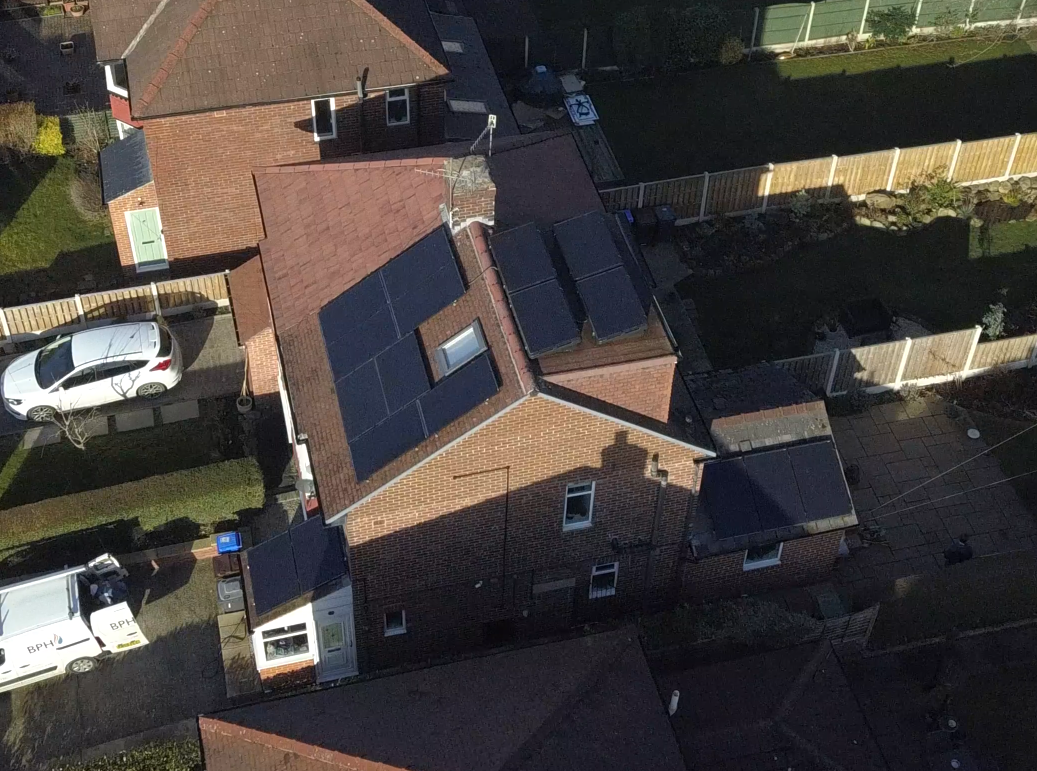My Solar PV System
My solar PV system was installed by CTS Renewables in September 2018. The summer 2018 announcement that the feed-in-tariff (FIT) was being shuttered at the end of March 2019 really focused our mind to finally get solar installed.
The financial reward of the FIT, even towards the end of its life still meant a reasonable return on investment from the installation. Remember, the FIT is guaranteed income (for both generation and export) for 20 years from installation. My calculations back then suggested a payback in around 8 or 9 years based on 13p per unit electricity. Although that was before Agile, Go and time of use tariffs came along with their variable pricing causing havoc for any payback calculations.
Hardware Overview
- 17 x 300W JA Solar panels (total 5.1kWh capacity)
- 17 x Solar Edge power optimisers (1 per panel)
- 3.68kWh Solar Edge inverter
Why 5.1kWh of panels but only a 3.68kWh inverter?

It’s because my panels are across a variety of roofs on the house. So this means a variety of angles and directions, meaning that not all the panels are at their peak at any one time through the day.
- Rear extension (3 panels, 29 degree angle, East 97 degrees)
- Dormer flat roof (4 panels, 15 degree angle, South/West 215 degrees)
- Main roof (8 panels, 35 degree angle, South/West 215 degrees)
- Porch roof (2 panels, 26 degree angle, South/West 215 degrees)
In the photo you can see 8 panels on the main roof, 2 on the porch.
There are then 4 panels that you can’t see on the flat roof and another 3 round the back east facing that are just out of shot too.
This drone shot of our house gives a fantastic view of all our panels.

Could I have gone bigger?
I did have quotes to up the panels to 320W and increase the inverter to 5.00kWh. But the jump in price was just too high and I just couldn’t justify it for a small increase in potential watts. It seemed like at the time that 300W was the sweetspot of price/performance.
Also, Northern Powergrid were asking £250 just to ‘apply’ for approval to go higher than 3.68kWh. So in the end, they made my mind up for me.
Have I regretted it? A bit. Some days, especially in spring and autumn I can see the system topping out at 3.68kWh for periods when lots of panels get to see the sunshine at the same time. It does make we wonder how much I could get out of the system without the 3.68kWh cap.
But would it have been worth the extra £1000 spend on higher capacities panels, larger inverter and the Northern Powergrid fee? I still don’t believe so, especially when most of the extra I’d generate (past 3.68kWh) would likely go back to the grid, ie that extra is not always usable.
System Performance
2019 brought the following performance from the system:
- Generated: 4250 kWh
- Exported: 2888 kWh (almost 70% going back to the grid unused)
- Best Day: 30.1 kWh
- Worst Day: 0.113 kWh

Solar Diversion (what we use)
As you can see from the above, I only used 30% of what I generated in 2019, so a whopping 70% of it went back exported to the grid. Ouch!
For heating and hot-water we currently have a gas combi-boiler, so no header/water tank. So we can’t make use of any diverters like an Eddi or iBoost etc.
Maybe this can be the topic of another blog, options to replace the combi-bolier in the future.
The plan for the solar was always going to be house usage initially (washing/drying the main culprits), then later down the line an EV and potentially some battery storage.
Both of those will certainly lead to more blog posts and both of those would swing the export figures back in our favour.
The biggest annoyance of any solar owner is generating tons of free electricity for it only to whistle back to the grid.
Any questions about the site, any suggestions about future blog topics or comments about any of my other existing blog entries, please let me know via the contact form.
If you find this information useful and are thinking of joining Octopus Energy, please consider using my referral code or ‘buy me a coffee’ to help support running costs of the website.
Using this referral code will gift you £50 of free credit after signup: https://share.octopus.energy/linen-pearl-869
If you’re considering owning part of a wind farm through Ripple Energy, get £25 of free credit (if investing more than £1000) using my Ripple referral link.
We can also be found on Twitter, please follow us @energystatsuk for daily Agile tariff pricing graphs and summaries.
Also, be sure to check out our Dashboard, Download Historical Data and OctoChargeCalc features to help you decide whether these tariffs are the right fit for you.
Note: The past performance of energy pricing is not necessarily a guide to the future.
